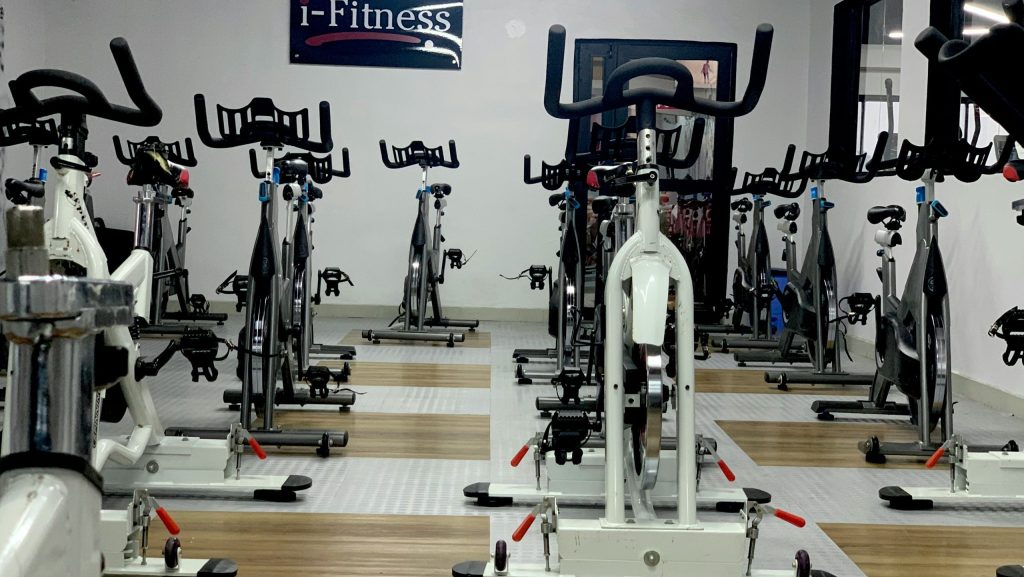Table of Contents
In the realm of fitness, optimizing your workout extends beyond merely increasing session duration or intensity; it involves the precise management of your heart rate. Each heartbeat provides critical data, not only reflecting your current physical condition but also serving as a key indicator for health improvement and enhanced performance. Understanding and monitoring your heart rate—measured in beats per minute (BPM)—is a strategic approach to refining workout effectiveness and achieving health goals more efficiently.
“Did you know that optimizing your heart rate during workouts can significantly improve your cardiovascular health and overall fitness outcomes? How well do you understand the impact of BPM on your training regimen?”
Heart rate training utilizes this data to customize exercise programs, ensuring workouts are conducted at optimal intensities tailored to individual body needs. By aligning exercise intensity with appropriate heart rate zones, you can maximize fat burning, increase stamina, improve cardiovascular health, and prevent the risks associated with over or under-training. The availability of heart rate monitors has democratized access to data-driven training strategies, previously available only to professional athletes.
Key Areas Explored
- Understanding Heart Rate Zones: Key for customizing training programs to effectively utilize fat reserves, enhance aerobic capacity, or build anaerobic strength.
- Benefits of Heart Rate Monitoring: Highlights how real-time heart rate data can improve training accuracy, safety, and motivation.
- Cardio Training Strategies: Examines different methods such as high-intensity interval training (HIIT) and steady-state cardio, each requiring specific heart rate considerations for optimal results.
- Heart Rate Training for Weight Loss: Demonstrates how adjusting your heart rate during exercise can significantly impact calorie burn and fat loss, thus enhancing weight loss efficiency.
- Advanced Heart Rate Training Techniques: Introduces techniques like threshold training and heart rate variability (HRV) analysis for those who seek new challenges or have reached a plateau in their routines.
Through this article, you will gain the knowledge and tools necessary to effectively integrate heart rate monitoring into your fitness regimen. Whether you are beginning your fitness journey or are an experienced athlete looking to refine your training, understanding the critical role of heart rate and BPM is essential. We provide insights into how to use heart rate zones and monitoring techniques effectively to align with your fitness goals, thus facilitating a more informed and effective approach to achieving physical excellence.

Heart Rate Zones in Fitness Training
Heart rate zones are essential for developing personalized and effective training programs. They enable trainers and fitness enthusiasts to tailor their workouts to meet specific cardiovascular goals. By understanding these zones, one can enhance workout efficiency and optimize energy expenditure during exercise, ensuring each session is aligned with their fitness objectives.
Definition of Heart Rate Zones
Heart rate zones categorize your maximum heart rate into different levels of exercise intensity, each aimed at specific training outcomes. These zones range from very light intensity, suitable for warming up, to maximum effort, ideal for short bursts of high-intensity activity. Here are the zones:
- Zone 1 (50-60% of maximum heart rate): This zone is perfect for warming up and cooling down. It also aids in recovery during interval training.
- Zone 2 (60-70%): Known as the fat-burning zone, this moderate intensity level is ideal for longer sessions that aim to build endurance and efficiently burn fat.
- Zone 3 (70-80%): This aerobic zone improves overall cardiovascular fitness and metabolic rate. It’s vigorous enough to enhance aerobic capacity without being unsustainable.
- Zone 4 (80-90%): This high-intensity zone focuses on increasing athletic performance by enhancing maximum performance capacity and the ability to sustain high-intensity efforts.
- Zone 5 (90-100%): Used for interval training, this zone improves speed and power through short, intense bursts of activity.
Benefits of Zone Training
Training in specific heart rate zones can lead to significant improvements in endurance, strength, and fat loss. The benefits of each zone are tailored to various fitness goals:
- Lower zones help build foundational endurance and promote fat metabolism, teaching the body to utilize fat as a primary energy source.
- Middle zones increase cardiovascular efficiency, enhancing the volume of blood your heart can pump and improving oxygen uptake by muscles.
- Higher zones improve anaerobic capacity and speed, allowing the body to handle intense activities better by managing lactic acid production effectively.
These zones contribute to overall health by enhancing heart function, increasing metabolic rate, and reducing the risk of chronic diseases. Training within these specified zones ensures that each workout session is optimized for maximum health benefits.
Calculating Your Heart Rate Zones
Calculating your heart rate zones is crucial for targeted training. The Karvonen formula is a widely used method that accounts for your resting and maximum heart rates to determine personalized training zones:
| Step | Description | Calculation |
|---|---|---|
| 1 | Find your maximum heart rate (MHR). | MHR = 220 – age |
| 2 | Determine your resting heart rate (RHR). | Measure when at complete rest. |
| 3 | Calculate your Heart Rate Reserve (HRR). | HRR = MHR – RHR |
| 4 | Calculate each zone. | Zone % of HRR + RHR |
Heart rate monitors and fitness watches are invaluable tools for accurately tracking these zones. They provide real-time data that allows individuals to adjust their training intensity based on specific fitness goals, making workouts more effective and goal-oriented.
“Training in Zone 2, often referred to as the fat-burning zone, allows for moderate-intensity workouts that are ideal for fat metabolism and endurance enhancement.”
Understanding and applying heart rate zones can significantly enhance the effectiveness of your training regimen. Whether you aim to improve endurance, speed, or overall health, leveraging this knowledge ensures that your efforts are precisely targeted and optimally beneficial. Dive deeper into each zone and learn how to adjust them to suit your specific workout routines and health objectives.

Heart Rate Monitoring in Fitness Training
Heart rate monitoring is an essential tool in fitness training, providing critical safety, accuracy, and efficiency benefits to your workouts. It offers real-time feedback on cardiovascular health, enabling personalized adjustments that are crucial for achieving fitness goals effectively.
Accuracy in Training
Heart rate monitoring ensures that individuals maintain the optimal intensity needed for specific fitness outcomes. This targeted training helps maximize workout results and prevents the inefficiencies associated with incorrect intensity levels. Real-time heart rate data allows users to stay within designated zones that cater to specific goals, such as fat burning, cardiovascular improvement, or endurance enhancement.
Fitness trainers rely on this data to customize exercise programs accurately. Utilizing heart rate information, they can adapt workouts to the precise needs of each individual. For example, to enhance aerobic capacity, a trainer might design workouts that maintain a client’s heart rate within the third and fourth zones, optimizing each session for cardiovascular benefits.
Additionally, heart rate monitoring is integral to periodization training strategies. These strategies involve varying the intensity and volume of workouts over specific periods to continuously challenge the body and prevent plateaus. Effective periodization requires accurate, ongoing heart rate monitoring to balance high-intensity sessions and recovery times, promoting optimal performance and minimizing injury risks.
Improving Workout Safety
Heart rate monitoring is vital for workout safety, helping to prevent the risks associated with overexertion. This is particularly important for individuals with pre-existing health conditions or those new to physical activity. Heart rate monitors can alert users when their heart rate approaches unsafe levels, prompting them to decrease exercise intensity or stop the workout if necessary.
For individuals with cardiovascular issues, heart rate monitoring ensures that exercise intensity remains within doctor-recommended limits. This continuous feedback helps prevent undue stress on the heart, which can lead to serious health complications.
Furthermore, heart rate monitors are beneficial for identifying signs of overtraining in the general exercising population. Elevated heart rates during light activities or at rest can indicate insufficient recovery. By following the data from heart rate monitors, users can adjust their exercise plans to incorporate necessary rest, avoiding the adverse effects of overtraining.
“Heart rate monitors can significantly reduce the risk of cardiovascular incidents by alerting users in real-time when their heart rate exceeds safe limits.”
Enhanced Motivation
Heart rate monitors significantly enhance workout motivation by providing real-time feedback. This data enables users to see the immediate impact of their efforts, encouraging them to adjust their intensity to achieve optimal results. The ability to track progress in real-time supports sustained engagement and adherence to fitness regimens.
The psychological impact of this immediate feedback is substantial, offering a tangible sense of progress and control over one’s fitness journey. Users can observe improvements in their physical condition, such as a decrease in heart rate over time for the same workout intensity, which serves as a motivational boost.
Moreover, many heart rate monitors come equipped with software and apps that analyze long-term performance data. These tools offer valuable insights into health and fitness trends, helping users set and achieve realistic goals based on their historical data.
- Real-time feedback helps users adjust effort during workouts to stay within optimal zones.
- Immediate data visibility increases user engagement and commitment to fitness goals.
- Long-term data trends provided by apps offer insights that can reshape training strategies and set achievable milestones.
Integrating heart rate monitoring into your fitness routine not only enhances the safety and effectiveness of your workouts but also makes them more enjoyable. This technology empowers you to make informed decisions, guiding you towards achieving your fitness goals with precision and safety. Dive deeper into how heart rate monitoring can transform your training, ensuring you train smarter and more effectively.

Cardio Training Strategies for Enhanced Fitness
Cardio training strategies are designed to improve cardiovascular health, enhance endurance, and increase caloric burn through a variety of methods. Each method, from high-intensity interval training (HIIT) to steady-state cardio, has distinct advantages and can be tailored to meet specific fitness goals, whether for weight loss, endurance enhancement, or general health improvement.
High-Intensity Interval Training (HIIT)
High-Intensity Interval Training, commonly known as HIIT, involves alternating short bursts of intense exercise with periods of rest or low-intensity activity. This training technique is recognized for its efficiency, often delivering significant health benefits in shorter durations compared to other exercise forms. HIIT is particularly effective at increasing metabolic rate and fat burning due to excess post-exercise oxygen consumption (EPOC), which keeps the metabolism elevated for hours after the workout.
HIIT sessions typically last between 20 to 30 minutes and can include activities such as sprinting, cycling, or jump roping. These workouts are structured with intervals, such as 30 seconds of intense sprinting followed by one minute of walking, repeated throughout the session. The benefits of HIIT extend beyond fat burning; they also include improved aerobic and anaerobic fitness, reduced blood pressure, and better blood sugar regulation.
“HIIT can increase metabolic rate for up to 48 hours after a workout, significantly enhancing fat burning and cardiovascular fitness.”
Steady-State Cardio
Steady-state cardio involves maintaining a consistent, moderate effort for an extended period, typically ranging from 30 to 60 minutes. This form of cardio is essential for developing endurance and is effective at burning calories and fat over time. Common steady-state exercises include running, cycling, swimming, and using elliptical machines, performed at about 60-70% of the maximum heart rate.
The benefits of steady-state cardio are numerous; it improves heart and lung health, aids in stress reduction, and is highly effective at enhancing aerobic capacity. This method is particularly favorable for those new to exercise or those who prefer a less intense but longer-duration workout session. Steady-state cardio allows for a quicker recovery and is less taxing on the body, making it a sustainable option for regular cardiovascular training.
Periodization in Cardio Training
Periodization in cardio training involves planning the workout schedule to vary the intensity and volume over specific periods to optimize fitness gains and prevent plateaus. This strategic approach is structured around phases of training that focus on different fitness goals, such as endurance building, speed enhancement, and performance peaking, followed by recovery.
| Phase | Focus | Typical Activities |
|---|---|---|
| Base | Building endurance | Long steady-state cardio |
| Build | Increasing speed and power | HIIT and tempo workouts |
| Peak | Optimizing performance | Mixed intensity workouts |
| Recovery | Rest and repair | Reduced intensity, light activities |
This method helps maintain motivation by varying workout types and intensities, making the training regimen more engaging and effective. It allows for adjustments based on individual responses to training, ensuring that the athlete or exerciser achieves peak condition at optimal times.
By exploring various cardio training strategies, individuals can develop a comprehensive fitness program that not only meets but exceeds their health and performance objectives. Incorporating techniques like HIIT, steady-state cardio, and periodization into your fitness routine can dramatically enhance workout efficiency and lead to significant improvements in cardiovascular health. Explore these strategies further to tailor your workout plan to your specific needs and goals, ensuring you achieve maximum health benefits from your efforts.

Optimizing Heart Rate Training for Weight Loss
Understanding the relationship between heart rate and weight loss can significantly enhance the effectiveness of your fitness regime. By targeting specific heart rate zones, you can maximize fat burning and optimize caloric expenditure, making every workout an efficient tool for weight loss. This approach not only aids in shedding unwanted pounds but also improves cardiovascular health and boosts metabolic efficiency.
Optimal Zones for Fat Loss
Heart rate training for weight loss focuses on maintaining heart rate zones that optimize fat burning. These zones, typically between 60-70% of one’s maximum heart rate, are known as the “fat-burning zones.” Training within this range encourages the body to use fat as its primary energy source, which is ideal for weight loss.
Scientifically, training in these moderate-intensity zones is more effective for fat metabolism than higher intensities, which rely more on carbohydrates for immediate energy. This is because lower intensity exercises allow the body to consume more oxygen, necessary for breaking down fat. For instance, a steady-state cardio session at 65% of your maximum heart rate effectively engages the body’s fat reserves.
“Exercising at 65% of your maximum heart rate is considered optimal for engaging the body’s fat reserves as the primary energy source.”
Integration with Diet
Combining heart rate-focused training with a balanced diet enhances weight loss results. Understanding how nutritional intake supports various exercise intensities is crucial. For example, consuming a higher proportion of complex carbohydrates on days with higher-intensity workouts provides necessary energy, while higher protein and fat intake is beneficial on lower-intensity days focused on fat burning.
- Pre-Workout Meal: Eat a balanced meal 2-3 hours before exercising to fuel your session.
- Post-Workout Nutrition: Consume a protein-rich meal or snack right after working out to aid muscle recovery.
- Hydration: Drinking adequate water before, during, and after workouts is essential for maintaining optimal performance and achieving desired heart rate zones.
Long-Term Weight Management
Using heart rate training for long-term weight management requires consistent adaptation. As individuals lose weight and improve their cardiovascular fitness, their heart rate response to exercise changes. This shift necessitates periodic adjustments to targeted heart rate zones to maintain effective fat burning.
Incorporating a variety of cardiovascular training methods helps prevent plateaus and keeps the body adapting. Alternating between high-intensity interval training (HIIT) to elevate metabolic rate and steady-state cardio to improve fat utilization provides a balanced approach, maintaining interest and maximizing weight loss. Additionally, integrating strength training builds muscle, which naturally increases metabolism and caloric burn at rest.
By harnessing heart rate training for weight loss, you create a highly effective and personalized fitness plan. Exploring how different heart rate zones influence fat burning and integrating these insights with dietary strategies can lead to sustained weight loss and enhanced health. As you continue to adjust and refine these methods, you will find the optimal approach that suits your individual needs and goals, ensuring long-term success in your weight management journey.

Advanced Heart Rate Training Techniques for Peak Performance
Advanced heart rate training techniques are pivotal for athletes and serious fitness enthusiasts aiming to maximize their performance capabilities. By employing sophisticated methods such as threshold training, heart rate variability (HRV) training, and monitoring recovery heart rates, these individuals can gain detailed insights into their physical capacities and enhance their training strategies for peak performance.
Threshold Training
Threshold training is crucial for optimizing athletic performance through precise heart rate management. This approach focuses on identifying and exercising at specific heart rate thresholds that mark transitions between different energy systems in the body. There are two primary thresholds: aerobic and anaerobic. Aerobic threshold training targets the level where the body begins to significantly use oxygen for energy production, ideal for endurance sports. Anaerobic threshold training is geared toward activities where lactic acid begins accumulating in the blood, indicating that the body is using glucose without oxygen, which is vital for high-intensity activities.
Effectively incorporating threshold training into a fitness routine involves first determining individual heart rate thresholds, typically through advanced physiological testing. Once identified, athletes can tailor their workouts to hover just below these thresholds to enhance endurance and manage exertion more efficiently, thereby improving their ability to perform high-intensity activities for extended periods.
Heart Rate Variability (HRV) Training
Heart rate variability training utilizes the subtle beat-to-beat changes in heart rate to assess autonomic nervous system function and gauge an athlete’s stress and recovery status. A higher HRV indicates that the body is well-recovered and can handle high-intensity training, while a lower HRV suggests a need for rest.
“HRV is a powerful indicator of physiological stress and recovery, with higher variability indicating a body well-prepared for physical stress.”
Athletes can adapt their training intensity based on HRV readings to optimize their workout schedule, avoiding overtraining while maximizing the effectiveness of each session. This method involves daily monitoring using devices that measure and analyze heart rate intervals, providing insights that help tailor training programs to the body’s current capabilities.
Recovery Heart Rate
Recovery heart rate is a critical measure of how quickly the heart rate returns to normal after exercise, serving as an indicator of fitness and recovery efficiency. Monitoring this rate helps assess an athlete’s cardiovascular recovery and overall fitness:
- Immediate Measurement: Measure heart rate immediately after exercise cessation.
- One-Minute Follow-Up: Record heart rate again one minute after stopping the exercise.
- Assessment: Evaluate the decrease in heart rate; a faster reduction indicates better cardiovascular fitness and recovery ability.
Using this data, athletes can adjust their training intensity and recovery periods to align better with their cardiovascular system’s capabilities, enhancing both fitness and performance over time.
Advanced heart rate training techniques like these offer unique insights that can significantly improve training outcomes. By understanding and applying threshold training, HRV training, and recovery heart rate monitoring, fitness enthusiasts can fine-tune their workouts to match their body’s needs precisely, pushing their limits responsibly and achieving optimal performance results.

Conclusion: Heart Rate and BPM: Training Strategies
This article has comprehensively explored how heart rate and BPM are utilized to optimize fitness from foundational knowledge to advanced applications. Starting with basic heart rate zones and extending into sophisticated training techniques, this content is aimed at enhancing training effectiveness and ensuring that fitness enthusiasts can maximize every workout for better performance and health outcomes.
Comprehensive Overview of Heart Rate Training
Understanding Heart Rate Zones is crucial. This section highlighted the importance of identifying your heart rate zones to personalize your training programs. Knowing whether you are in the fat burning, cardio, or peak zone helps tailor your workouts to achieve specific health and fitness objectives, enhancing both endurance and strength.
The Benefits of Heart Rate Monitoring are extensive. Monitoring your heart rate ensures that you are training within the optimal intensity for your fitness goals, thereby maximizing workout efficacy and safety. Real-time heart rate data help maintain the right pace, avoiding the risks of under-training or overexerting, which can lead to injuries or burnout.
Cardio Training Strategies discussed include the utilization of both High-Intensity Interval Training (HIIT) and steady-state cardio. These methodologies cater to different fitness needs—HIIT is ideal for those looking to boost metabolism and improve quick power output, whereas steady-state cardio benefits long-duration endurance and overall cardiovascular health.
Heart Rate Training for Weight Loss examined how targeted heart rate zones optimize fat burning. By maintaining the heart rate within a specific range, the body efficiently utilizes fat as a primary energy source, which is pivotal for weight loss. Coupling this strategy with dietary adjustments enhances the effectiveness of your fitness regime.
Advanced Heart Rate Training Techniques such as threshold training and HRV offer insights into further optimizing training and recovery. These techniques allow for precision in training plans that adapt to personal physiological responses, promoting superior performance and reducing injury risks.
Call to Action
“Harness the power of heart rate training today. Start by identifying your personal heart rate zones and tailor your workouts to maximize efficiency, safety, and effectiveness. There’s no better time than now to optimize your fitness journey.”
In conclusion, effectively understanding and applying heart rate data transforms training approaches, leading to improved health, performance, and efficient weight management. This article has laid out essential insights across various aspects of heart rate training that, when applied, can significantly benefit anyone from fitness novices to seasoned athletes. The strategic application of these insights ensures that training is not only effective but also safe and tailored to individual fitness levels.
The potential of heart rate training is vast. When harnessed correctly, it becomes a formidable tool in any fitness enthusiast’s arsenal, guiding you to achieve your health and fitness goals efficiently and safely. Dive deeper into these strategies, apply the principles, and witness a transformative improvement in your fitness capabilities.
Citations:
- Different exercise training modalities similarly improve heart rate variability in sedentary middle-aged adults: the FIT-AGEING randomized controlled trial, https://www.ncbi.nlm.nih.gov/pmc/articles/PMC9287234/
- Heart Rate Monitoring in Team Sports—A Conceptual Framework for Contextualizing Heart Rate Measures for Training and Recovery Prescription, https://www.ncbi.nlm.nih.gov/pmc/articles/PMC5990631/
- A New Approach for Evaluation of Cardiovascular Fitness and Cardiac Responses to Maximal Exercise Test in Master Runners: A Cross-Sectional Study, https://www.ncbi.nlm.nih.gov/pmc/articles/PMC8955590/